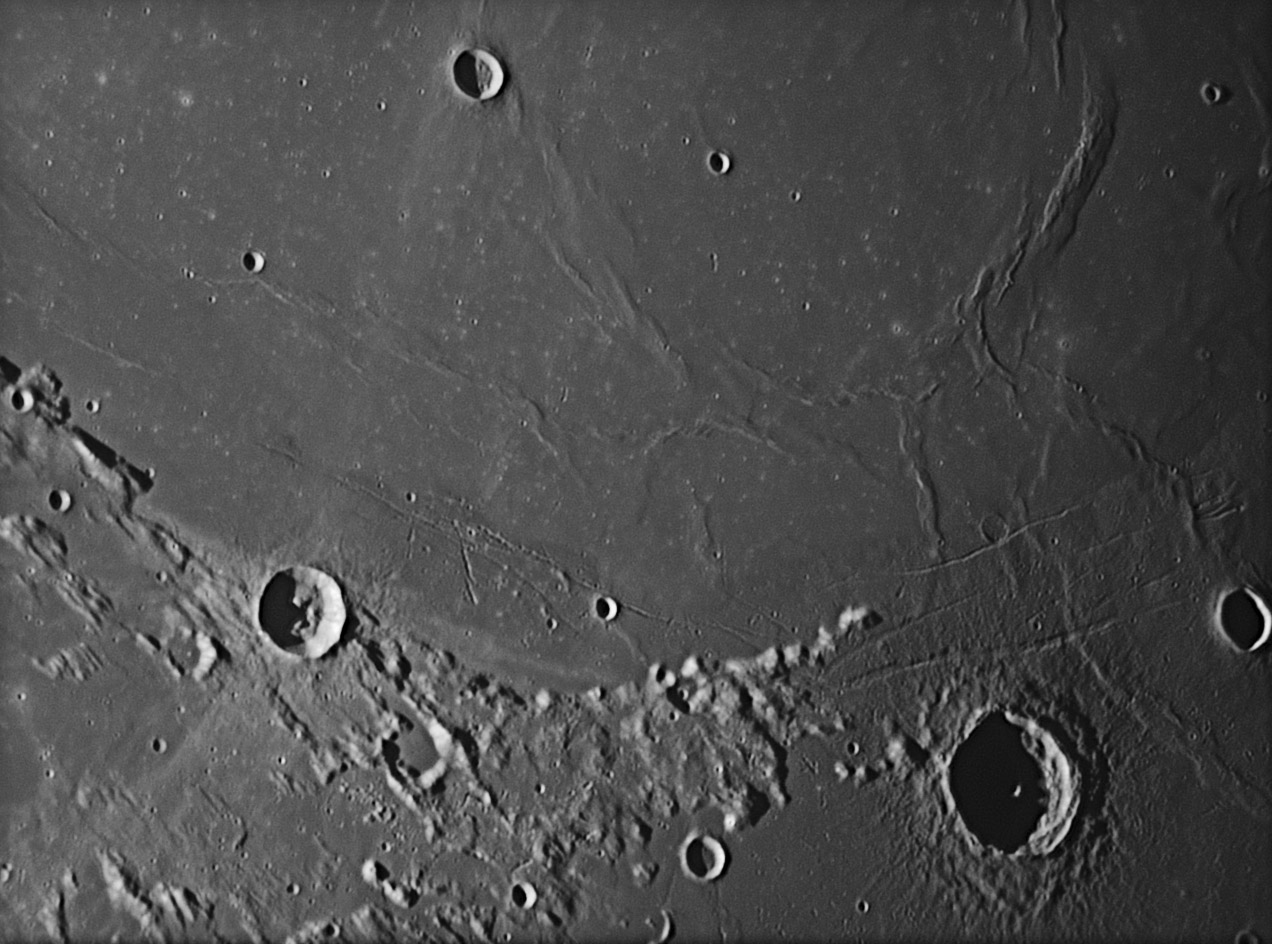October 18, 2011
Less of a Mystery?

image by " rel="nofollow Bart Declercq
A few days ago LPOD featured a relatively high Sun view of a suspiciously circular feature (SCF) in southern Mare Serenitatis.
The question was if the feature (in the center of this image) was a buried impact crater. Bart and a few others have sent images
with better illumination. Here is what Bart says: As far as I can tell from my images, part of the "rim" of this ghost crater seems
to be formed by a coincidental string of small impact craters, two other parts by ripples in the mare lava. The central "peak" is
just a flat white spot (perhaps a couple of craters too small to resolve individually and young enough to have bright ejecta blankets.
In all, it's probably more a testament to the human ability to see patterns everywhere than a real ghost crater (a pity, would have
been quite cool to find such a large unknown feature on the Moon!) That is the most likely explanation but not the most satisfying.
The SCF does break the trend of the shore-following mare ridges, which is consistent with a crater having deformed the direction
of the later-formed ridges. LRO's " rel="nofollow Quick Map shows a small shadow casting feature at the SCF's center which could be a hill that
is the unburied top of a central peak. (Or maybe not, there is no NAC image of that area). Finally, there does seem to be a hint of
a curved ridge on the west (left) side that completes the rim, and is not part of the main mare ridges. I think Bart's interpretation is
probably right, but it would be more interesting if it isn't.
" rel="nofollow Chuck Wood
Technical Details
30cm Orion Optics Newtonian telescope and Basler Ace a1300 camera (1296x966 resolution) and an Astronomik Red filter - image
scale is about 0.15"/pixel.
Related Links
Rükl plate 24



